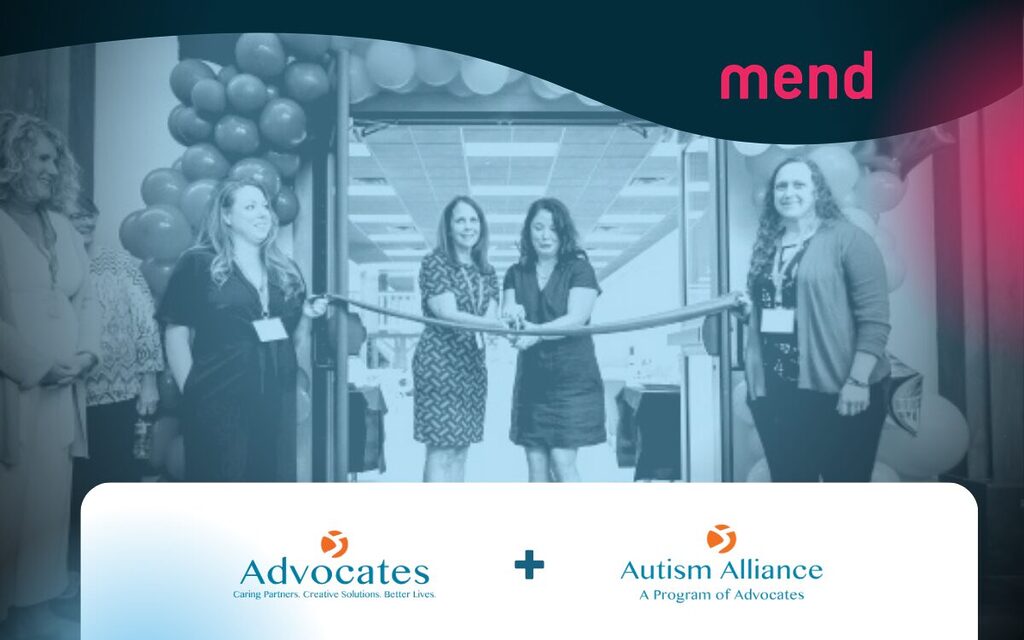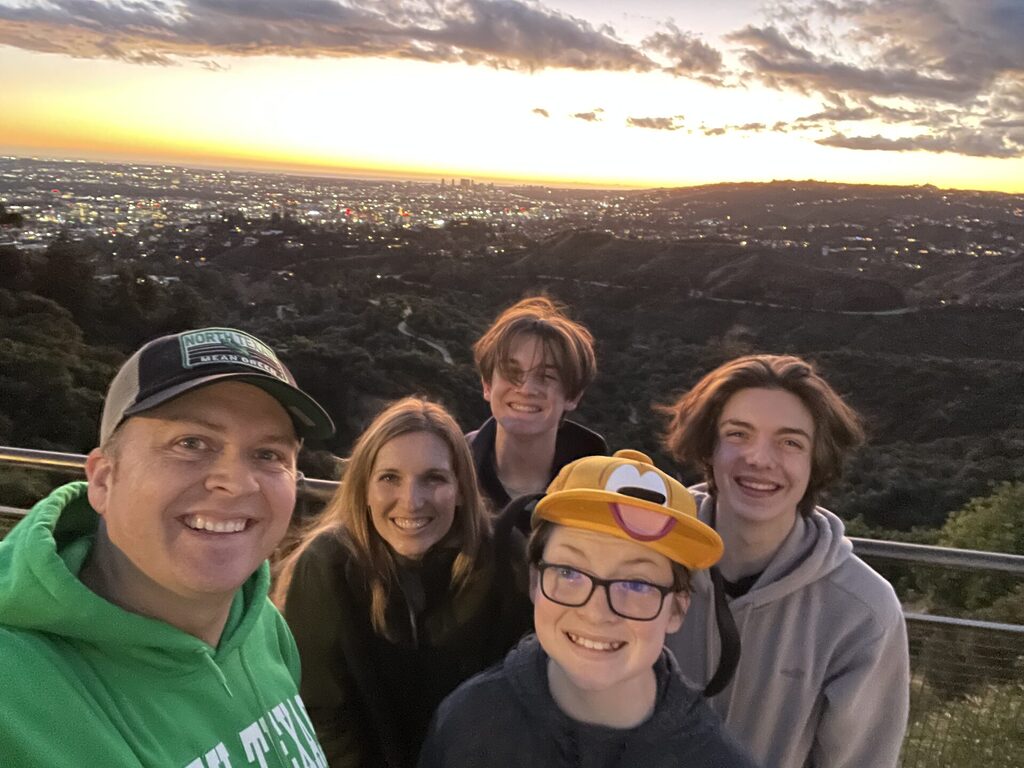
““

““
Parenting is never easy, but when two of your three children are autistic, the challenges—and rewards—take on a whole new dimension. For years, my family struggled to understand why my oldest son faced certain hurdles. It wasn’t until he turned 14 that we discovered the answer: autism. That diagnosis changed everything. It unlocked a clearer understanding of his world and allowed us to find programs and strategies that helped him thrive.
Here’s my fam:

Now, he’s flourishing in ways we could only dream of during those early years—he’s applying to colleges as we speak (I’m not crying. You’re crying.). Specialized programs and spaces designed with autism in mind have been a lifeline for my family, making life and parenting more manageable while paving the way for my children’s incredible success.
This is why, when Carol Piso told me about what Advocates is doing at the Natick Mall, I had to share it. Their Autism Welcome Center, created by the Autism Alliance (a program of Advocates), is a shining example of how community support can make a world of difference. Check it out:
The center is a safe, sensory-friendly space for individuals with autism and their families. It offers resources, respite, and a welcoming environment for those who might otherwise find public spaces overwhelming. The program even goes a step further, providing training for local businesses and organizations, including the shops in the mall, to help them better accommodate people on the spectrum.
Here’s how the center works, as described in a recent video:
“Every day, families stop by, share their stories, and access resources. The space offers a sensory-friendly environment where individuals can decompress, reregulate, and return to their activities. For families, it’s a refuge and a reminder that they belong.”
The Autism Welcome Center is the result of collaboration between the Autism Alliance, the Natick Mall, and the Doug Flutie Jr. Foundation, which provided funding to certify businesses and develop this innovative space. The project has blossomed into a hub of inclusion, offering events like sensory-friendly shopping hours and a dedicated area for relaxation.
Hearing about this initiative filled me with hope. Programs like this remind me that we’re not alone in our journey. They create a world where my children—and so many others—can be their authentic selves, knowing they are supported, welcomed, and celebrated.
To everyone involved in making the Autism Welcome Center a reality: thank you. Your work is a lifeline to families like mine, offering both practical support and a deep sense of belonging.
For those in the MetroWest area, I encourage you to visit the center or learn more about its mission. You can find more information here.
To me, this isn’t just a story about a program at a mall. It’s a story about what happens when communities come together to make the world a little brighter for everyone.
““
At Mend, we think that EHRs are accomplishing what they need to for clinicians and executives across the healthcare spectrum. But gaps arise when it comes to distinct healthcare verticals—each with its own patient engagement needs. No exception can be made for mental & behavioral healthcare, which has unique, nuanced components of its healthcare workflow, scheduling, payments and real-time data needs. An EHR cannot be expected to cover every need, so Mend’s tools are designed specifically to bridge the naturally occurring gaps, making patient engagement seamless and accessible without overhauling systems that already work well in other areas. Mend The Gap means making patient-centric care easy, automated, and accessible while ensuring that mental and behavioral healthcare organizations maximize efficiency and minimize administrative burden. By closing these gaps, we allow behavioral healthcare providers at CMHCs, SUD wellness organizations, and outpatient mental health facilities to focus on what matters most: delivering excellent care.